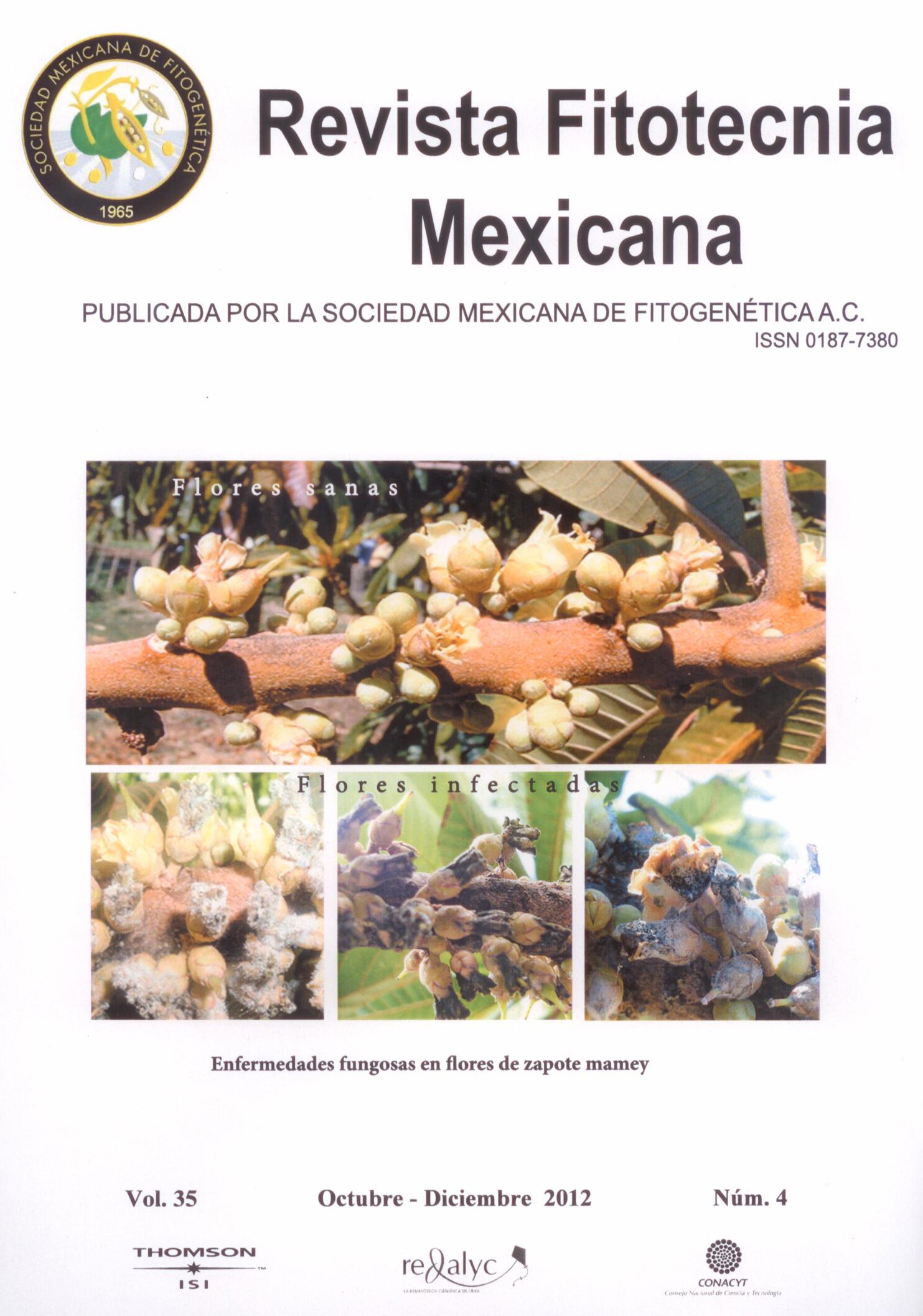SEED YIELD AND ADAPTABILITY OF ‘NEGRO COMAPA’ BEAN CULTIVAR IN TWO MÉXICAN REGIONS
Main Article Content
Abstract
Black beans (Phaseolus vulgaris L.), with opaque and small grains, are in high demand in the regions of Central and Southeastern regions of México. The present research had the objective of determining the adaptation and yield of the new bean variety ‘Negro Comapa’ in the humid tropical areas of the Gulf of México and in the Central Mexican highlands. From 2007 to 2010, a regional trial that included this variety was established in six environments in the state of Veracruz (two under rain-fed conditions and four under residual moisture conditions). In 2009 and 2010 this variety was also included in a national yield trial which was evaluated in 13 test environments in México: six in Veracruz, four in Guanajuato, one in Durango, one in Sinaloa, and one in Chiapas. In the national test, in addition to yield, the response of the variety to naturally incident diseases was determined. In the same years ‘Negro Comapa’ was validated in farmer fields in 10 environments of Veracruz, one in Oaxaca and one in Chiapas. In both trials, the one conducted in Veracruz and the national one, ‘Negro Comapa’ showed higher average yield, outperforming all other genotypes, with a yield of 1287 and 1764 kg ha-1, respectively. At sites with disease pressure, ‘Negro Comapa’ was resistant to common mosaic virus (BCMV) and angular leaf spot, and tolerant to the bean golden yellow mosaic virus (BGYMV). In validation plots, the average yield of ‘Negro Comapa’ was 51 % higher than the famers’ variety.

